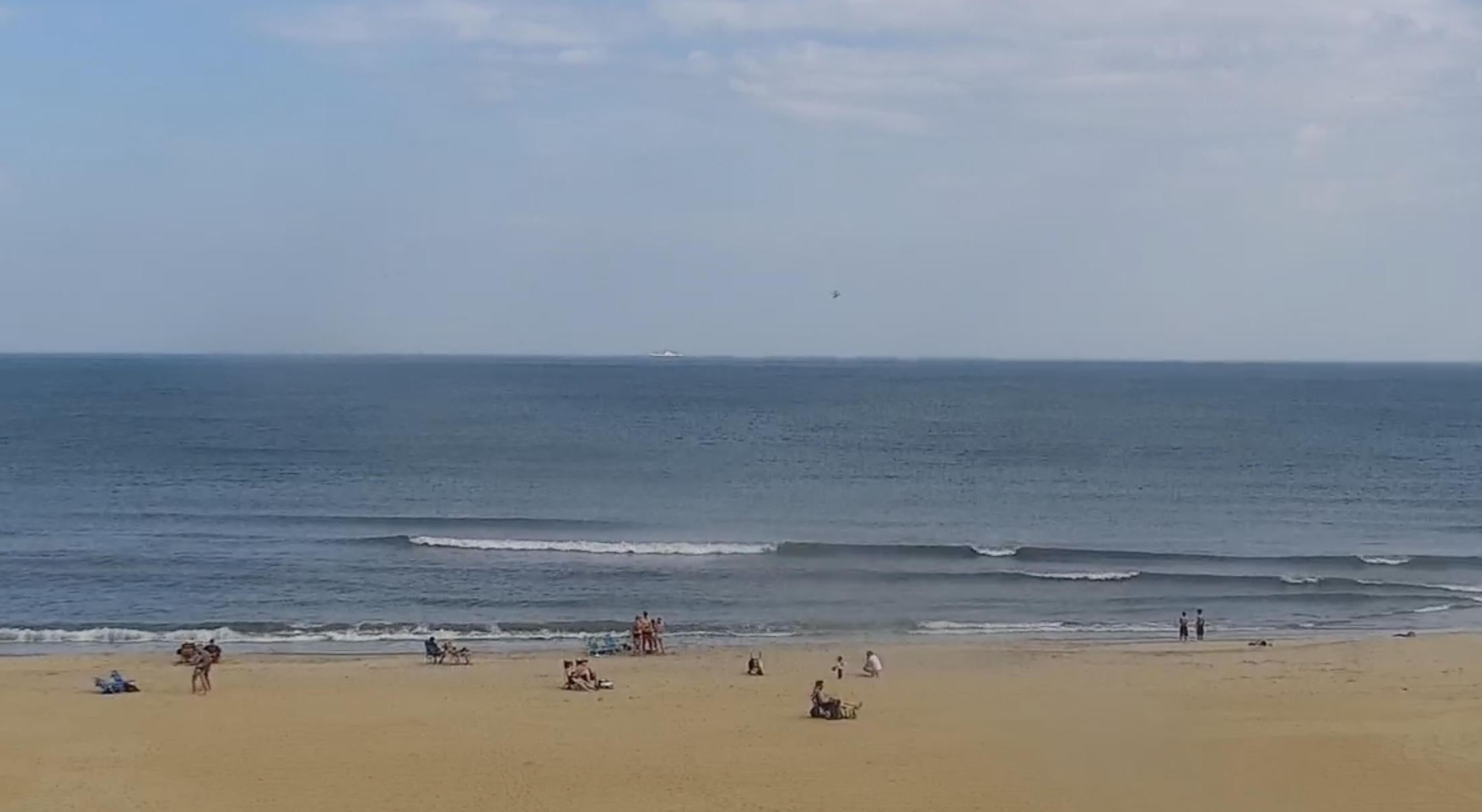As part of the feasibility study to see if a passenger ferry option should be added to the Hatteras-Ocracoke car ferry runs, trial runs are planned for this spring, Ed Goodwin, the N.C. Ferry Division director, announced Monday at a public meeting in the Community Center.
“I attend monthly meetings in Raleigh and this is the fastest moving transportation initiative in the state,” Goodwin said. “Everyone I have spoken to has been supportive. Hopefully, the feasibility study we are doing will confirm this.”
The fact that Hyde County Board of Commissioners has signed a letter supporting this idea is very important, he added.
For Goodwin, it has been frustrating to see visitors get out of line because of the sometimes two-and-a-half hour wait to board a ferry during peak season.
Jed Dixon, deputy ferry director, provided a visual presentation on how this service will operate. He showed photos of the receding shoreline of the Hatteras spit over the last 10 years, which is causing the shoaling in the channel.
He pointed out that dredging responsibilities are divided between the state and the federal side managed by the U.S. Army Corps of Engineers. By far, most of the area that needs most dredging is in the area covered by Army Corps, which currently does not have the funds to continue. North Carolina cannot do all of the dredging which is why this initiative is being considered.
The type of boat the Ferry Division has in mind would hold 149 passengers and is about 90 feet long and 40 feet wide. The crew needed is three, a captain and two deck hands, as opposed to six crew members needed for a car ferry. Once in the sound, it could travel up to 28 knots, and the travel time into the village would take one and a half hours or less.
The benefits Dixon outlined for this addition would include shorter wait time for car ferries, a direct passenger route into Ocracoke village, the ability to plan travel times by making reservations for departure times, relieving vehicle traffic on Ocracoke, and increasing visitors to Ocracoke.
According to Goodwin, the cost of a passenger ferry is about $5 million as opposed to $10 to $20 million for a new car ferry. One possibility is to start with a lease that includes an option to buy. Another option would include private investors who would lease the boat(s) to the state.
Additional infrastructure needs include new docking and an embarking ramp that includes wheelchair accessibility.
At the public comment period, Vince O’Neal, owner of the Pony Island Restaurant, who was among about 40 islanders in the audience, thought this was a good idea but implored DOT to not lose focus on reopening the short route. He pointed out that the dredged sand could be used to restore the receding Hatteras shoreline to slow down the shoaling. He remembered when trolleys were used in the village many years ago, and they caused congestion with their frequent stops. He said they should also consider dropping off the passengers at the north end terminal and shuttle them into the village.
Goodwin said a contract for a feasibility study was recently awarded to Volkert, a company that specializes in transportation and infrastructure engineering services to federal, state and municipal government and private industry clients. The final report will be issued in December, but the company will keep the ferry division informed of its findings throughout the year.
Tommy Hutcherson, owner of the Variety Store, pointed out that islanders need to be thinking about major storms and alternatives for Ocracoke residents to get on and off island when access through Hatteras Island to Nags Head is blocked.
Islander Fred Westervelt asked about using airboats. Goodwin pointed out that there are larger hovercrafts but they are more expensive and have much higher maintenance costs.
Hyde County Manager Bill Rich suggested that passenger ferries may be the only alternative to getting more visitors here since the $3.5 million spent on dredging the short route for three months during the 2013 winter did not fix it.
“If the short run was going to work, we would not be having this conversation,” he said. “We cannot rely on the federal government to continue dredging. We have to secure our future. If we start by leasing these boats, this will be the feasibility study itself.”
Rich complimented the Ferry Division for being pro-active.
The stakeholders named for this feasibility study are the N.C. Ferry Division, the NC DOT Strategic Planning Group, Hyde/Dare County managers, Ocracoke working group, Hyde County Transit, U.S. Army Corps of Engineers and the U.S. Coast Guard.
(Read more news about Ocracoke Island at www.ocracokeobserver.com. Reprinted with permission.)














